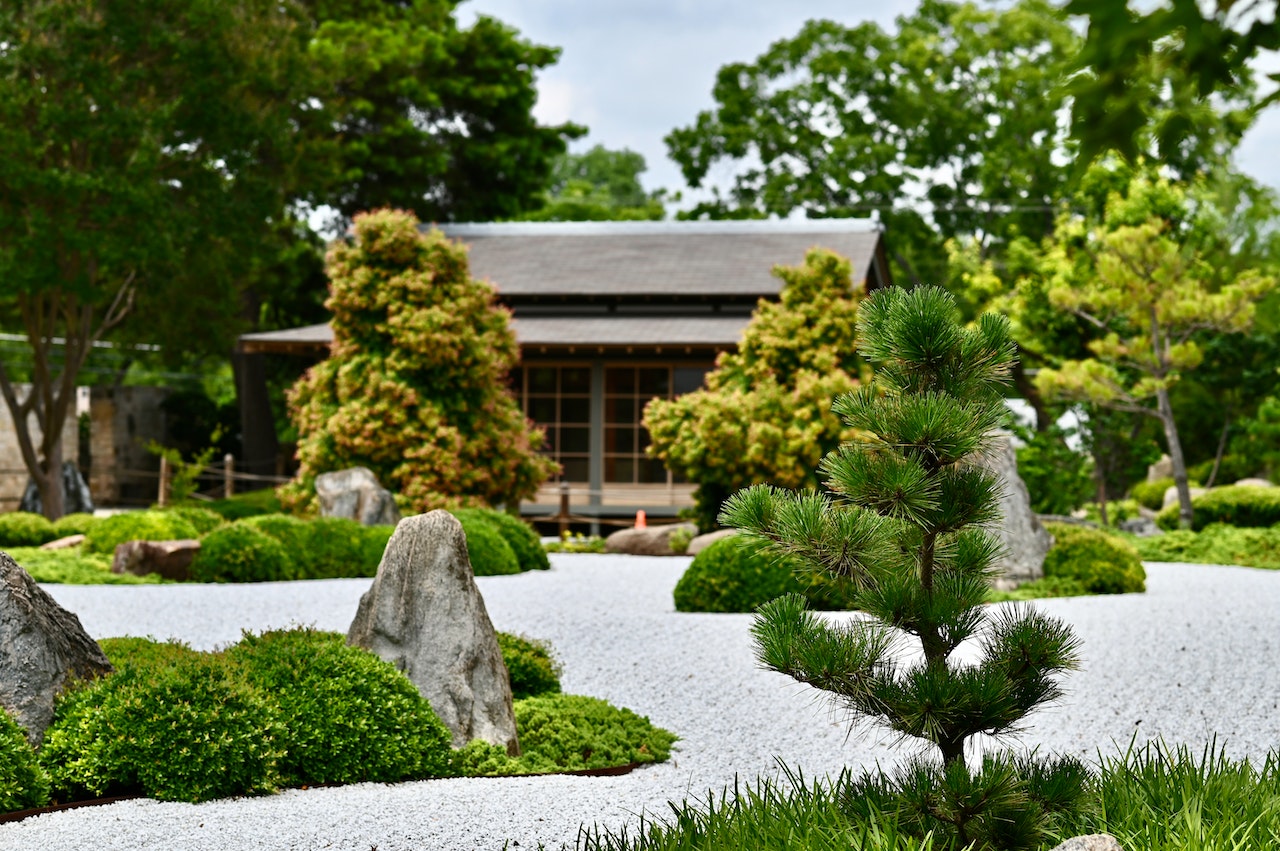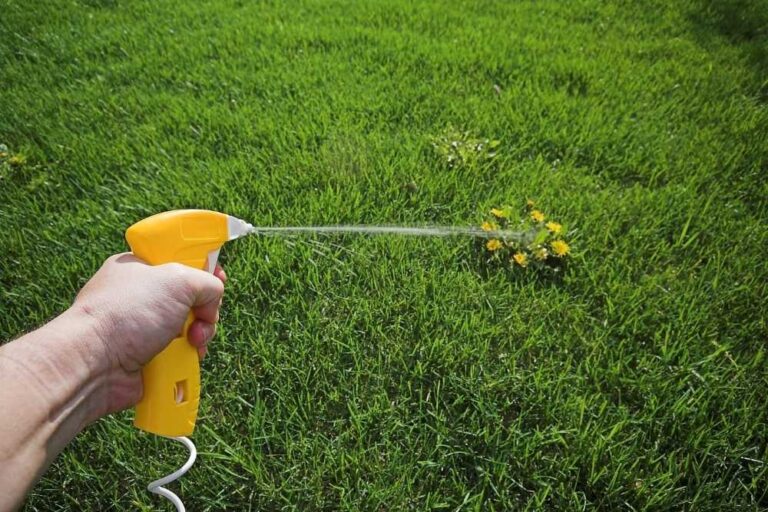Zen Garden Ideas on a Budget: All You Need to Know to Inspire Your Design
Most people love Zen gardens because they seem like a cool thing to have. For many, it’s a great spot to unwind and relax, and for others, it a great addition to their home’s curb appeal.
If you want to create a Zen garden, you should know that this is more than just a collection of rocks and beautiful plants. Rather, it’s a living canvas that reflects the deep connection between humans and the natural world.
It’s worth noting most elements you’ll find in a Zen garden represents something deep and priceless. For instance, the beautifully raked sands represents the ocean while the immortal stone sitting near the waterfall symbolizes calm, stoicism and the passage of time. If you are new to Zen garden design and are looking to create one in your home, this article has you covered. In the sections below, you will explore some Zen garden ideas on a budget and how to use them to inspire your design.
Zen Gardens: Understanding the Basics
“Zen” is a Japanese pronunciation of the Chinese word “Ch’an,” which means thought, mediation or absorption. The Zen principles and all its practices have their roots in Buddhism. What’s interesting is that Zen and all its principles didn’t originate in Japan, rather, it started in India but was formalized in China before spreading to Japan and eventually to the world. What we now admire as Zen gardens are not just an aspect of landscaping, but an important part of a culture that has span several generations. The design of a Zen garden is both an art and science that prioritizes key principles such as harmony, simplicity, and balance.
Despite being a Buddhist tradition and being practiced by a significant number of people, Zen isn’t considered a religion. Instead, it’s a school of Buddhist values and practices that fosters mindfulness and spiritual growth. Today, Zen practices are common in various parts of the world, with meditation, awareness, and simplicity being the key focus. The early believers of Zen Buddhism converged in Zen centers and temples, with the basic principles being to sit, breathe and become aware. Nowadays, people prefer to practice Zen meditation in a serene and relaxed environment, espeically where there’s an influence of nature.
Which Elements Should I Incorporate In My Zen Garden?
If this question is ringing in your mind, you are on the right track to designing a great Zen garden. The purpose of a Zen garden is not to show off your creativity or highlight your knowledge of the ancient Buddhist tradition, rather to offer a serene environment to reconnect with nature during meditation. It’s that one spot in your home where you can relax, and become aware of your existence.
Plants
The types of plants to grow in your garden should create a sense of calm and tranquility. You don’t necessarily need native Japanese plants. However, you should choose plants that add to the overall serenity of the outdoor space. Mix and match evergreens, such as boxwoods, with deciduous plants like bonsai to add variety and color to your garden. Climbers such as chocolate vines can drape over adjacent trees or a fence, giving your garden that touch of wild beauty.
Rocks and Stones
When designing a Zen garden, it’s crucial to incorporate hard stones such as gneiss, basalt, and granite. These stones and rocks represent islands and mountains, often symbolizing restfulness and radiance. Ideally, you want to choose locally available stones in your region. How you group and integrate the various rocks and stones also plays a crucial role in shaping the landscape.
Water
A well-designed Zen garden should always feature a water element, often comprising a water collection point, a waterfall, a stream, or a pond. Most Zen gardens, however, are designed in a dry landscape. That means living water may not be present but they can be represented by rocks or wavy and spiral patterns on the sand.
Bridge
The Japanese bridge that you’ll often find in most Zen gardens symbolizes the physical or spiritual journey. Most people who believe in the afterlife incorporate a red Japanese bridge into the design as a symbolic pathway connecting the material and the spiritual worlds.
Explore the Different Zen Garden Types and Designs
If you want to create that perfect connection to nature or embrace the beauty and simplicity of a Japanese-inspired garden, you must carefully choose Zen garden ideas on a budget designs that meets your unique needs. Besides being a great spot where you can rejuvenate and disconnect from your busy life, a Zen garden can also serve as an extension of your living space. Here are the different types and designs of the Japanese Zen Gardens:
The Japanese Roji or the Tea Garden
If you are into garden design and landscaping, you have probably heard of the Japanese Roji. This tea garden or Roji (pronounced as “doji”) is one of those Zen garden designs you can choose to inspire your outdoor space. In most Asian traditions, especially in Japan, the tea garden often leads to the tea house and features two sections: an outer garden and indoor garden. In between these two gardens is a path leading to the tea house. While designing your Tea garden, you should incorporate key elements such as a stone lantern, stepping stones, and a tea plant. If you have enough space in your backyard, the tea garden can be a great addition to your home.
The Courtyard Garden or Tsubo-niwa
As the name suggests, the Courtyard garden is designed for smaller spaces. It may not feature all the elements you would find in the other gardens, but it brings nature right into your home. Most Courtyard garden designs are located in the middle of strcture or in an enclosed space surrounded by buildings or walls. You can design the garden to have a transparent roof or to be open to the sky.
If you want to bring that spiritual refresher into your home, you can have a minimalistic courtyard garden along the hallway or adjacent to your living room. Where possible, you can have some water elements within the courtyard garden. However, bringing water into an indoor garden requires proper design considerations, so you want to work with an expert designer on this.
The Rock Garden or Karesansui
Dry-rock gardens are popularly referred to as Zen gardens since they are built with religious or meditative intentions. These gardens are commonly found in Buddhist temples, but many people nowadays have the dry-rock gardens in their backyard. Some of the most popular elements in a rock garden include raked sands, minimalist plants, waterfall features, and relaxation spots. The other aspects that must prioritize while designing a rock garden is the placement of stones and the grouping of boulders.
The motivation behind a rock garden is that everything has a life force, and energy flows in every element. Most components, from rocks and boulders to trees and statues in a typical Karesansui are in groupings of three, five, seven, etc. Sets of odd numbers or any asymmetrical element are considered beautiful and natural.
The Miniature Stroll Garden: Kaiyu-Shiki
A Japanese stroll garden is typically built in a park-like setting where you can stroll around and immerse yourself in the beauty of nature. When creating a Zen garden, however, you may not have an expansive space, hence the need to create a miniature Stroll Garden that still highlights key components such as a waterfall, a pond, winding pathways, trees, and rocks. Every element that’s part of the Kaiyu-Shiki serves a purpose, so you should be intentional in your design.
As you come up with the entire plan, ensure you have a great backdrop that puts every element into is ideal spot. If you can find a way to add some elements of mystery, such that everything can’t be seen from one position, the better. For instance, hide the top of your artificial waterfall behind a rock or evergreens so that it doesn’t seem like it’s coming from nowhere.
The 7 Zen Design Principles
Now that you know some key elements to include in your Zen garden and where to source some small Zen garden ideas on a budget, let’s look at the key design principles that deepen the experience you can create in the garden. These principles date back to the ancient Japanese culture and traditions and are deeply rooted in spiritual philosophy.
1. Austerity – Koko
In the Japanese Zen culture, Koko refers to the element of maturity that emphasizes omission and exclusion. The goal is to focus only on what’s necessary during the design and to omit all the non-essential details. While creating your Zen garden, you can implement the idea of Austerity or Koko by being intentional and deliberate about your choice of materials and designs. This concept comes to life with the image of an old rugged rock, the worn bark of a tree, or a weathered wooden bench. Each of these elements showcases the passage of time and natural beauty.
2. Irregularity or Asymmetry – Fukinsei
There’s something about asymmetry that makes it a true reflection of nature. The principle of Fukinsei leverages this unevenness to explore how nature creates engaging and dynamic beauty. A perfect example of how Fukinsei plays out in a Zen garden is the odd grouping of various elements such as stones and the varying heights and sizes of trees. The underlying idea is that nature is imperfect, and Zen creates some space for co-creation.
3. Simplicity – Kanso
A great Zen garden design should be simple and functional. This is emphasized by the concept of Kanso, which stems from the Japanese Zen philosophy. With simplicity comes a sense of clarity, where each element contributes to the overall balance of space. When designing your Zen garden, Kansotranslates into plain and natural materials, uncluttered pathways, and a careful selection of plants that offer freshness and order.
4. Naturalness – Shizen
Shizen or naturalness incorporates the contribution of nature into your Zen garden. In Japanese philosophy, everything between heaven and earth constitutes Shizen, and the idea is to let the energy of nature flow within your garden. An easy way to incorporate naturalness into your garden is to let in some natural light and incorporate plants and vegetation into the design.
5. Breaking from Routine/Surprise – Datsuzoku
Datsuzoku is a Japanese concept that means “deviating from routine.” In the design context, this principle represents transcending the conventional. There are several ways of incorporating Datsuzoku, but the idea is to break free from the ordinary and explore subtle design elements that spark curiosity and nurture creativity. An example of Datsuzoku in action is reusing old materials to design functional aspects such as water faucets and bridges.
6. Mysterious Profundity – Yugen
At the core of the Zen principles that bring out the beauty and uniqueness of your Zen garden is the concept of Yugen. This concept emphasizes that real beauty exists through its suggestiveness, not excessive emphasis. The goal is to evoke feelings with each element used in the design. To incorporate Yugen in the Zen garden, you need to use the power of suggestion, i.e., avoid revealing things in their entirety. For instance, hide the source of water feeding the waterfall behind vegetation, trees, or rock formations. You can also keep conspicuous elements such as statues in strategic yet unexpected locations.
7. Calm and Stillness – Seijaku
The concept of Seijaku is rooted in spiritual consciousness, where stillness facilitate a deeper sense of harmony. This principle is often expressed in a Zen garden using elements that encourage a quiet mind and evoke a state of inner clarity. Some key aspects that bring forth the spirit of Seijaku include the carefully raked gravel to symbolize peaceful ripples of water and ancient rocks grouped to evoke the beauty of mountains.
Inspire Your Budget-Friendly Zen Garden Design
Turning your garden into a masterpiece doesn’t have to be costly, provided you know what you are doing and are willing to stretch the boundaries of your creativity. To get things into perspective, here are a few examples of budget-friendly garden ideas that you can use to inspire your Zen garden project.
In every Japanese garden, a couple of elements converge to create the perfect relaxation haven. If you are on a budget, source the key elements such as stones/rocks, water elements and plants locally. Ideally, you want to go for tiny trees such as bonsai, maple, and Japanese cherry. You can also browse the internet to compare and contrast the various Japanese garden ideas on a budgetbefore picking what works best for you.
Gardens located on hilly or sloping terrain can be challenging to landscape. You can transform these gardens into unique spaces by tapping into some sloped garden ideas on a budget. For instance, you want to grow some ground cover and build a raised bed at strategic spots. Similarly, you can add a pathway and plant native plants of varying sizes to neutralize that slopping terrain.
Design Your Budget-Friendly Zen Garden Today
When designing your Zen garden on a budget, everything needs to be purposefully selected. Regardless of the type of garden you wish to create, here are the critical steps you should take:
If you want to design a beautiful Zen garden without straining financially, you will need to intentionally choose readily available and inexpensive materials. The goal is to find those diamonds in the rough and to adapt them to your space. Consider sourcing rocks, stones, gravel, wood, etc., from nature rather than buying theme. You can also design some elements, such as a bridge and water feature. That, however, means you’ll need to spend some time learning the necessary craft skills and piecing everything together.
The other way to create a budget-friendly garden is to find old but relevant materials and modify them to get more valuable and high-quality products. It’s a way of giving an otherwise-obsolete material a second shot at life. How you will upcycle and repurpose some materials depends on what’s readily available and your sense of style. Imagine an old, rusty water tub that’s been repainted and repurposed into a water feature or some scrap wood and lumber offcuts used to design a meditation deck.
For the products and materials you can’t repurpose or source within your home or from nature, you’ll need to shop them from a nearby thrift shop. Products like lanterns and planters as well as gardening tools are readily and cheaply available in thrift shops or other second-hand marketplaces. Similarly, you can check out with friends if they have gardening tools and materials they are selling or disposing. This is a great way to minimize expenditures.
Tips to Customize Your Zen Garden
Having explored all it takes to design a Zen garden, it is good practice to make some room for customization. Depending on your budget, space, and the availability of materials, you may need to rethink the design to work with what you have. Here is a step-by-step guide on customizing a Zen garden to suit your needs and preferences.
Knowing what to incorporate into the Zen garden isn’t enough to create a timeless and statement garden. Instead, you should compare several designs and source inspiration from one that best meets your expectations.
When creating a Zen garden at home, you want to find a cool spot away from busy streets or noisy neighbors. Whether your garden is sloping or flat, careful planning can turn the space into a beautiful relaxation spot that integrates with the land’s natural contours. Incorporate the sloping garden ideas on a budget into your design to create a functional and serene space.
Once you have a picture of how you want your garden to look, you should come up with a rough sketch of the garden space. Try to be creative without going overboard. Remember to keep the seven Zen design principles in mind.
As much as you want to stick to the design principles and keep everything within the boundaries of tradition, you also want to infuse some personality into the garden. Feel free to experiment with your unique design aspects while maintaining the Zen aesthetic and principles.
If you are working on a budget, there are high chances you’ll need to scale your garden sometime in the future. While designing or customizing the garden, you want to create space for future expansion. Additionally, make sure you’ve placed everything strategically such that you won’t need to move everything if you are to expand the garden.
Most designs in a Zen garden are intentional, and often picked to represent something. This may seem restrictive but it doesn’t have to be case. For instance, it’s advisable to keep the colors natural and cool, but it’s still acceptable to play around with your favorite hues, provided you don’t go overboard.
Make the Zen Garden Design Work for You
Designing and creating a Zen garden can be a fun and rewarding experience, and so should maintaining and keeping the garden in perfect form. If you have some design and hand-on skills, you’ll have an easier time creating your own Zen garden ideas on a budget. Otherwise, you may need to consult an architect with some background in Zen garden design.
Once you have the garden, your work is to maintain it. You’ll need to pick up debris every other week or clean the walkways whenever necessary. Depending on how big your garden is, you may need help maintaining the garden. You can seek assistance from friends or family or choose to hire professional landscapers. However, if the garden is small, you should learn to maintain it, and even make the entire process meditative.






